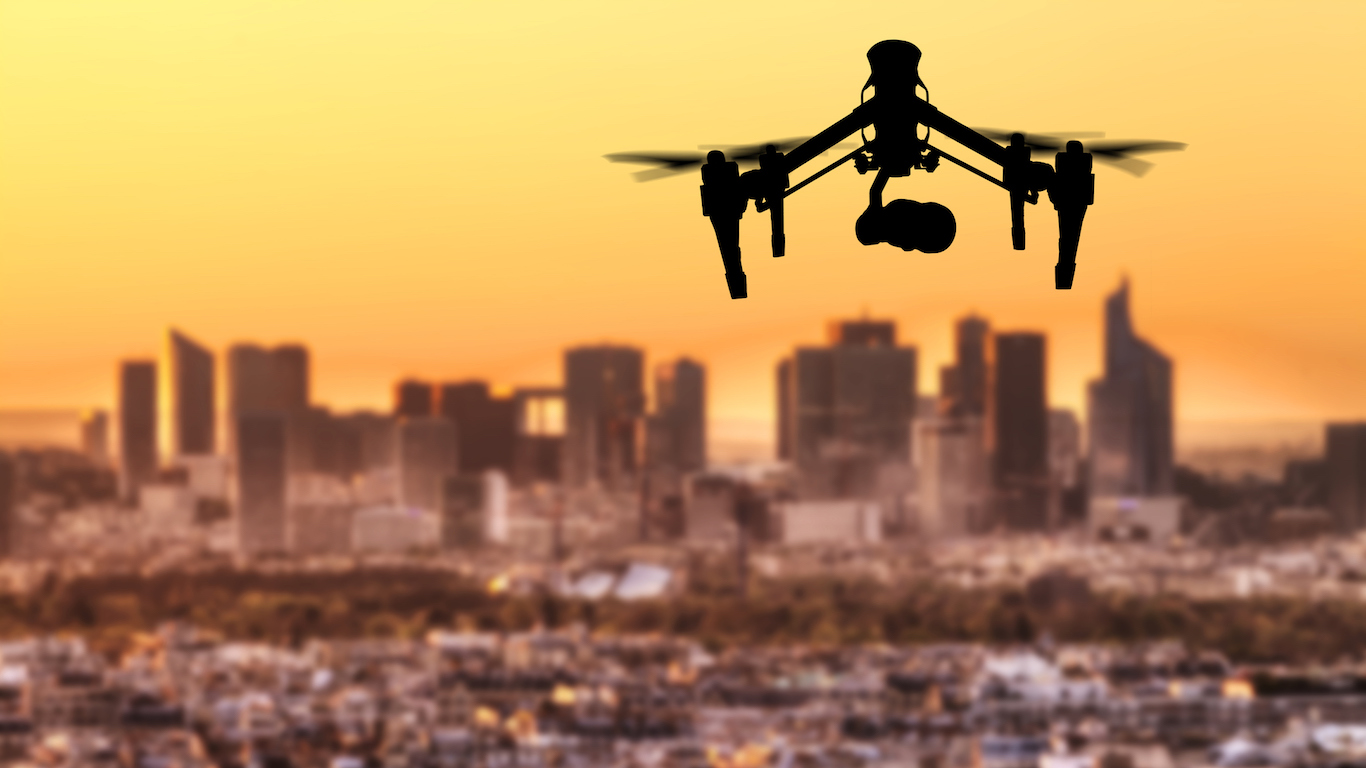Consumer Electronics
The Weaponization and Attacks Using Drones Have Only Just Begun

Published:
Last Updated:

The weekend of September 14, 2019, was a monumental one in the world where the old economy can be crippled by new technologies. Saudi Arabia’s Abqaiq oil processing facility under Saudi Aramco was attacked by drones. While not the first attack of this sort, this attack reportedly took down close to half of Saudi Arabia’s oil production. While the United States pointed to Iran, and while Yemen’s Houthi rebels (who have backing by Iran) have claimed responsibility and threatened more attacks, this is a situation in which the use of drones in warfare is only just beginning.
Knocking out half of a country’s energy production is one thing, but it’s another issue entirely when that country supplies nearly 10% of the world’s oil. Saudi Arabia is a fairly unique situation in which much of the oil operation is concentrated enough to create problems, but the use of drones to attack an economy may become the new model. This was also not the first such attack on Saudi’s oil, as an explosive-laden drone attack was made over the summer at a natural gas processing plant unit at the Shaybah field.
24/7 Wall St. previously identified 17 ways that drones were changing the world. Most of those instances, even the rare instances in that forward-looking piece, are now becoming quite common or could be easy to implement. For starters, a drone is no longer just a small propeller-driven aerial device.
There have been reports of near-collisions between drones and aircraft, and now many nations are using drones in their military actions. The United States and some other NATO nations have used drones to fire missiles for years, but there was a recent drone attack (said to be aquatic drones) on oil tankers in the waters of the United Arab Emirates.
While not an economic change on the surface, drones bring significant changes in state and local law enforcement, in which drones can be used in surveillance and crime prevention. Even in 2016, police in Dallas, Texas, used a police robot (a drone) to take out a sniper who was shooting police by loading it with small explosives and sending that unit into the room in which the gunman was holed up.
In prior years, Goldman Sachs projected that military use is likely to remain the top spending class for drones for many years ahead. These drones range in size from as small as a bird up to Predator drones that can be the size of a small jet and have advanced camera systems and remote missile delivery systems. Most military drones in use today are the aerial UAVs (unmanned aerial vehicles), and Boeing Co. (NYSE: BA) recently named an unmanned fighter drone program as the “virtual wingman” to assist fighter jets. The military also uses ground-based UGVs (unmanned ground vehicles) and aquatic drones.
Other changes are coming in drone warfare. Boeing won a contract in 2018 to design, build and deliver four MQ-25A unmanned air vehicles to serve as refueling tankers for Navy carrier air wings. The potential here is great, including allowing carrier-based jets to extend their flying range and to keep those aircraft carriers (which cost about $13 billion each) to still be useful while also staying out of range of most anti-ship missiles from China or other nations.
The use of drones in cargo and parcel delivery could have major economic ramifications. It could bring serious danger as well, but imagine a world where one delivery person who is a drone operator can deploy 20 or 50 packages simultaneously in the same neighborhood. That’s a game-changer for Amazon, as well as UPS, FedEx and the USPS.
While drones already are being used commercially in oil and gas, energy, mining, farming, real estate, the media, security and so on, almost every one of those upside uses can come with a downside. Drones can be used against the public, businesses, transportation and law enforcement.
ISIS reportedly has used drones in strikes against the Iraqi army, and would-be thieves have used them to case properties. Even Venezuelan President Maduro reportedly was targeted by drones, unsuccessfully, in 2018.
Even in 2018, academic institutions warned that artificial intelligence can make drones, cars and anything else electronic dangerous. The U.S. Army already started plans to stop using Chinese-made drones before the trade war ever started.
Start by taking a quick retirement quiz from SmartAsset that will match you with up to 3 financial advisors that serve your area and beyond in 5 minutes, or less.
Each advisor has been vetted by SmartAsset and is held to a fiduciary standard to act in your best interests.
Here’s how it works:
1. Answer SmartAsset advisor match quiz
2. Review your pre-screened matches at your leisure. Check out the advisors’ profiles.
3. Speak with advisors at no cost to you. Have an introductory call on the phone or introduction in person and choose whom to work with in the future
Get started right here.
Thank you for reading! Have some feedback for us?
Contact the 24/7 Wall St. editorial team.